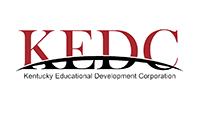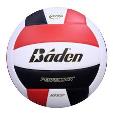02/06/14 – Wrestling State Information – Time Schedule
PrintTHIS INFORMATION HAS BEEN SUPERSEDED BY ADDITIONAL ACTION REGARDING THE 2014 TOURNAMENT DUE TO SPECIFIC REQUESTS FROM PARTICIPATING COACHES. THIS IS KEPT ON FILE FOR FUTURE REFERENCE IN CASE ISSUES ARE NOT RESOLVED AT THE 2014 EVENT BUT IS NOT IN EFFECT FOR 2014.
The time schedule for the State Wrestling Tournament has been posted online for a few days, but based on a few inquiries, primarily from the Lexington area, it appears there is some misinformation being distributed, and exacting clarification may be helpful.
The staff members that manage this event have consulted a great many groups, and looked at dozens of ideas. They have talked to their peers in other states, other event promoters, coaches, officials and all sorts of other individuals. The Wrestling advisory committee, made up predominantly of coaches at this time, was one of the first groups consulted. That means some suggestions were used, and some were not, as all of that input from the various groups couldn’t have been alike. Is it (the schedule) different from that we did for the last several years? Yes. Did they have major issues to address that potentially threatened the future of the event? Yes. Do other states and events have simultaneous matches in the last round? Certainly, particularly those in multiple classes.
The staff that manages these events primarily do nothing but manage athletic events. The staff that works in the KHSAA office do not try and officiate. They instruct officials how to the rules are written and intended to be enforced, but the officials themselves must step forward and manage the matches. The staff that manages these events do not try and coach. They leave that to the coaches. They may see something they think should be tactically different, but it isn’t their role to try and tell coaches how to coach. Those two groups have their own roles. For the staff here that works on behalf of the 70,000 student-athletes, their job and in all reality, solely their job, is to conduct safe competitions where life lessons are taught and learned and the experience for the majority of the athletes is enhanced.
The staff that manages these various championships spend the vast majority of their year reviewing events, how they can be improved, changed or otherwise revised to be made better for all involved. This group is compelled to look at many concerns, starting with safety, before making final determinations. For the last couple of years, since the move to the new facility, there have been situations that likely occur more frequently than in the past because of the size of the venue. The continued renovation and work within the old site in Frankfort rendered this office unable to use that facility any longer. In addition, the growth of the sport dictated a new way of managing the event, particularly with the proper separation of fans and others from the playing venue, and forced a renewed look at safety concerns. There were certainly a few things when we left that old facility including:
- The smaller bowl, while having a more intimate feeling, had the fans and non-competitors FAR too close to the mats.Many past negative situations were caused by that proximity.
- The use of four mats meant that we very seldom hit the 45-minute rule, there simply wasn’t a means of getting the matches for the tournament as can be done now. But most can remember what that third day was like, after three days in that venue, nearly everyone was exhausted.
- We lost the lighting effect on the last night. Frankly, that loss was a big one for people that liked the old venue, but things change. There is not the same lighting capability (yet) at this venue, where the KHSAA can create a dramatic finale, etc. to the event. And there are minimal options for enhancing the lighting of the event due to the necessary equipment and supports that would be required to replicate the old setup. But it is still our long term hope that continued revisions to the physical plant of that arena will help in this regard.
Some of these things changing venue may be “good” losses, some were bad. But ever since the move, staff has looked at continual revision and tweaking to make this championship the best it can possibly be, and better than it ever was. That is certainly the goal. At the end of last year’s events, there were four major areas that became imperative they be addressed.
- The “break” prior to the last wrestling round had to be eliminated or certainly minimized. The almost “Animal House” atmosphere, while some may view as fun, in fact resulted in at least five individuals being hit by thrown objects, including two police officers. The coaches and other adults refused to take charge of the situation and in fact, in many cases participated. And despite having more than double the security staff as had ever been in place in the old facility, this situation came to a point where the future ability to retain security assistance even from trained and sworn police officers, was in jeopardy, as well as our future use of this venue. That concern had to be addressed.
- The length of Saturday wrestling. Following last year’s event, as money continues to get tighter and tighter for high school programs, more than a dozen senior administrators at our schools and school systems expressed concern with the lateness of Saturday’s conclusion since the move. This may not be an issue for a local school in close proximity to the arena, but is a huge issue to the administrators who fund the housing, bus drivers, and other travel costs for a team that cannot make it back at a reasonable hour on Saturday, and therefore feel compelled to stay an extra night. As a result, many of the squads left long before the finals, denying their athletes, particularly the younger ones, the opportunity to see and be involved with that last wrestling session, regardless of how it was structured.
- The lateness of that Saturday hour also had another negative impact. The last couple of tournaments had less media and promotional coverage of its final wrestling round than any tournament in many years. Simply put, when you finish as late as the wrestling did, there is really nothing media outlets can do as deadlines have passed and the ability to highlight performances and the event is lessened. A year of promoting these students and the great things they do is literally washed away as you have no coverage for these outstanding individuals, coaches and teams. The lateness also has a profound ability of your ability to alternatively schedule should you have inclement weather. And this is a major concern for winter events.
- And lastly, and this is probably more subjective, the final round of wrestling since the move to the new venue did not appear to meet that standards of prior years. Not in terms of on mat performance by the kids, but the session itself. By the middle of the last group of matches, most of the audience was gone, teams weren’t able to stay and be involved at the end, and that last group of performers were wrestling in an entirely different atmosphere than the first group, and certainly different than during the finals at the former venue. Whether it is the lack of a spotlight effect, lack of drama that lighting creates, or what other identifiable issue is at the root cause, the atmosphere simply hasn’t been up to championship level of the events the KHSAA attempts to produce.
The staff then began talking with various groups and individuals about different options:
- There was talk about cutting back to 16 competitors per division. That certainly would remedy the situation with the schedule as easily the event could be completed in a variety of formats in only two days, and not even two full days. However, this would have resulted in less participation, and likely stunt the sustained future growth of the sport.
- Going to a third day was certainly not an option that could be considered seriously, but was discussed. Frankly, the same group that had travel concerns about Saturday night are the vocal group that help lead to the move to the new venue so that we could utilize the increase floor space and have two additional mats (especially critical now since four mats will no longer fit on the floor of the former venue).
- There was talk about only changing the final round. Go to two mats. However, the Advisory Committee correctly pointed out to staff that we had long tried to keep coaches from having to cover multiple mats during the medal matches, and this would force coaches to make choices that seemed unfair given the year long body of work.
- There was talk of additional mats, but frankly, that is likely fruitless in the long term. With a one-class system, while you might gain a few matches the first day, it likely would be full of breaks for the 45-minute rule to expire, and therefore, based on years of data collected for the length of time to complete rounds, you likely would lost in waiting periods what you gained in mats.
Members of the Advisory Committee then suggested a change in the last round in subsequent discussions with staff. If the primary and most important thing was that coaches not have to split allegiance and cover multiple mats, this could be eliminated by having simultaneous medal round matches.
Upon further discussion of that suggestions, several deal of advantages and benefits were identified to changing the schedule for the last round:
- No coach would be required to be on multiple mats in that last round. For the smaller schools, this is huge.
- No mat breakdown and movement would be required. Therefore no appreciable break between rounds. And since the last matches contested before the break would involve the heavyweights, there would be a very strong likelihood that the 45-minute rule would never implemented prior to the start of the final round.
- Four times the number of athletes would be involved in the last session. Eight per weight class would get that opportunity to be highlighted at the same time instead of being lost in the afternoon consolation round. This takes NOTHING away from the championship match and its competitors. They still get the recognition of being the two who wrestle for the title, whether its one of one match, or one of four matches. And they will get the ability to be the one standing on top of the podium as number one. And the only one able to say that.
- This also means that the team championship, which is the ultimate prize of the tournament, would be decided later in the day. This will undoubtedly contribute in a positive to the atmosphere for the competitors, coaches, officials and fans. Perhaps this one thing can help replace the “drama” effect that is lost without special event lighting. It may be that the last four bouts in a specific class may decide a team title that in the past would be a formality. This “suspense” and delaying of team awards can only be viewed as a positive.
- With the new online TV network, the Association, its coaches and its schools could highlight and expose more wrestlers to the public. Promotion of the sport is the key to its sustained and future growth. The ability to live stream the championship bout, and part of other bouts if the championship ends quickly, is a growth and promotion opportunity for the sport.
- Recognition of the eight medalists can be timed better, to where travel plans for those athletes needing to leave can be scheduled. All eight would be needed at one time, and then able to be dismissed. The efficiencies gained in presenting in this manner should minimize any dead time from past tournaments waiting on competitors to report.
This change will undoubtedly lead to a decrease in revenue. Frankly, there will be less time selling tickets which has to reduce revenue. But that loss in revenue is not important if this change improves the overall tournament experience, particularly for those who are NOT in the final two, and helps in long term growth. Those other parents and families deserve to have the participation of their son or daughter in just as bright a light as the winner, and THAT is one major thing that will help sustain the sport in the future.
If people believe:
- Recognizing more students instead of less students is bad;
- Only the top finishers deserve final round recognition;
- This is somehow depriving two people of anything at all;
- The travel concerns of the 100 schools that participate in Wrestling are not important since it is state;
- Safety of all in the arena doesn’t need to be addressed; and/or
- All decisions should be based on event revenue;
Then with appropriate apologies to individuals, those feelings are contradictory to the purpose of the high school championships and there will simply need to be agreement to disagree.
Wrestling, despite its rich heritage, is constantly changing. In the past:
- Leaving Louisville with the State Tournament was going to ruin wrestling;
- Larry Mann no longer running the tournaments was going to ruin wrestling;
- Eliminating districts was going to ruin wrestling;
- Coaching Requirements were going to ruin wrestling;
- Legislative restrictions on students below grade seven (7) were going to ruin wrestling;
- Going to a 32-person bracket was going to ruin wrestling;
- Skin conditions were going to ruin wrestling;
- Weight management was going to ruin wrestling
- Jack Cline retiring was going to ruin wrestling;
- Assigning secretaries were going to ruin wrestling;
- Moving away from Frankfort was going to ruin wrestling;
- Realignment was going to ruin wrestling.
All of those happened. And wrestling continues to grow. Despite the “Chicken littles” involved in both this and somewhat, in each sport that goes through change, change is inevitable. But as always, every event is under constant evaluation. Change is never done for the sake of change, but we can’t have a close-minded myopic view to change simply because it is change.
Wrestling is a team sport as it is contested at this level, regardless of its classification as an individual sport within regulations. To some, it is the ultimate team sport in that it combines individual accomplishment and team achievement, and both appear that they will get increased emphasis with the format change that the wrestling staff has proposed. As always, events are evaluated after the events to determine future adjustments. But any changes made have been in the best interest of the sport as a whole and the entire group of participants as the primary focus, not a single group of students or adults.
We hope all involved continue your support of this great sport.
Print





























